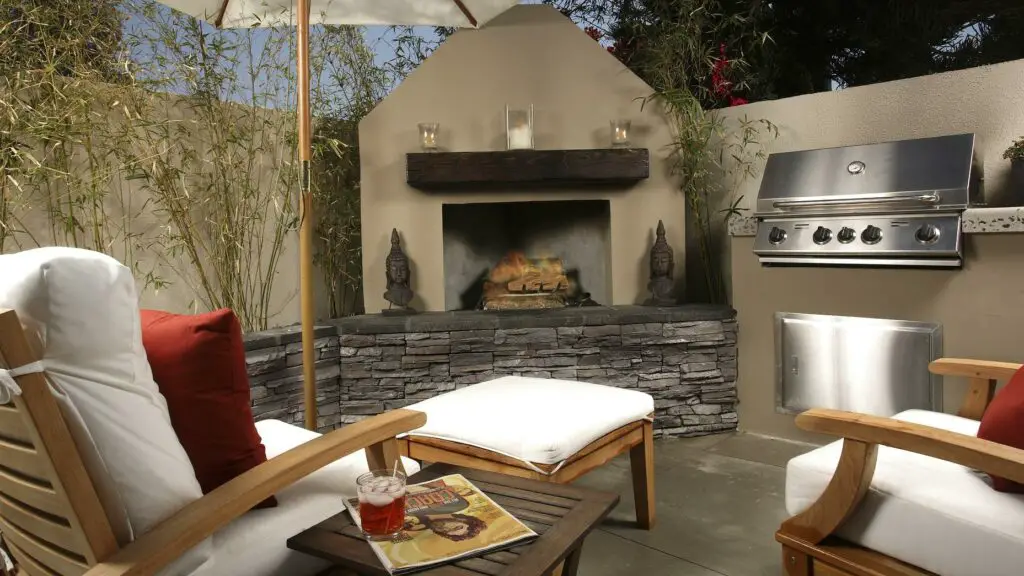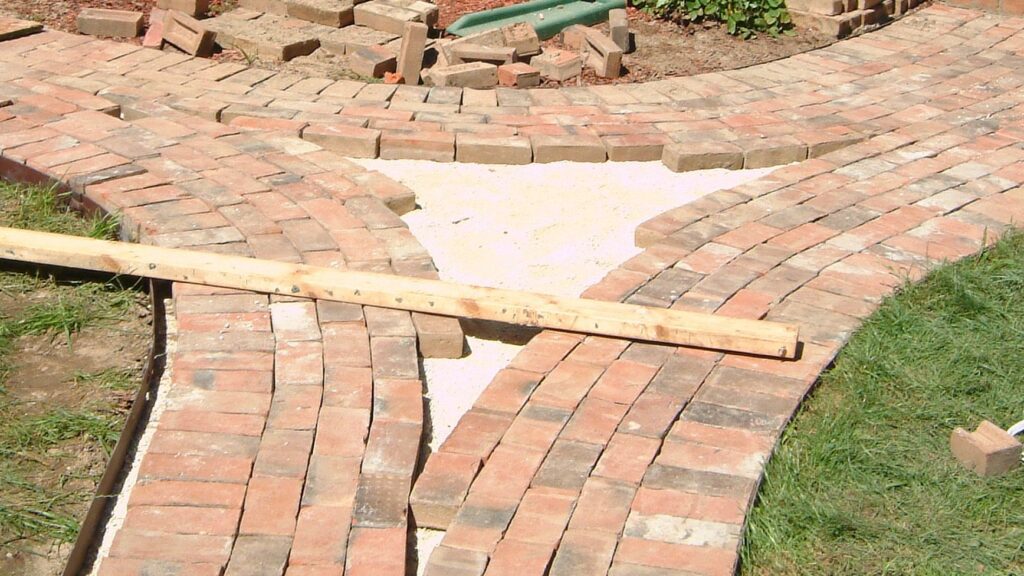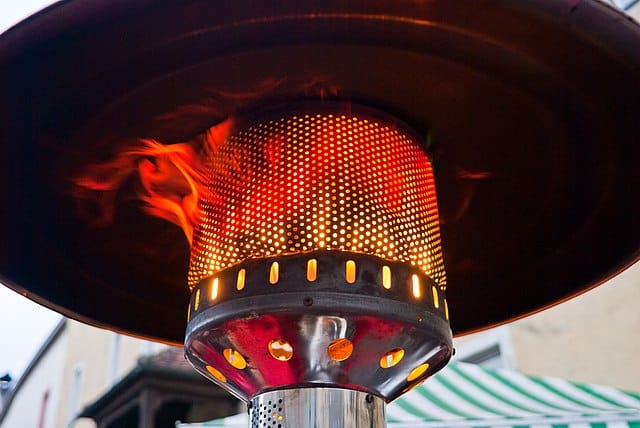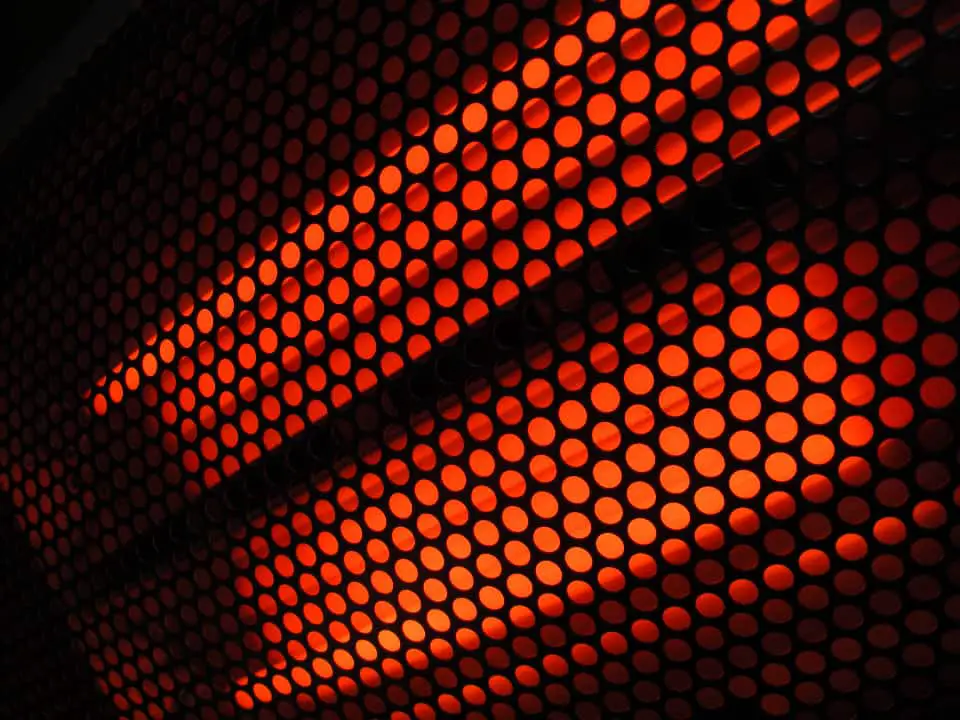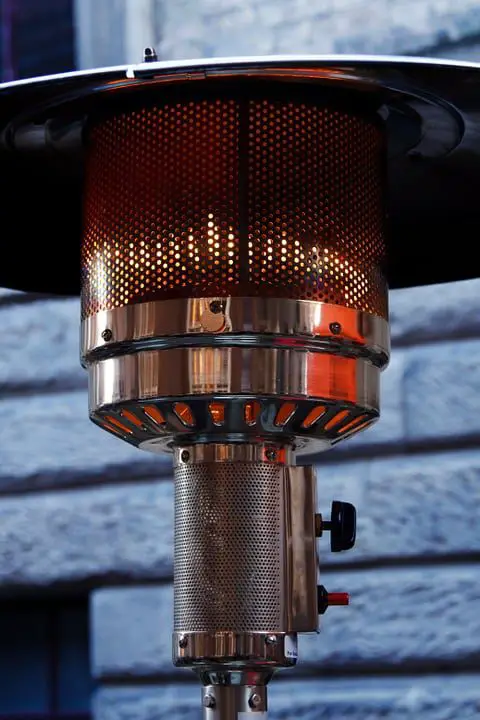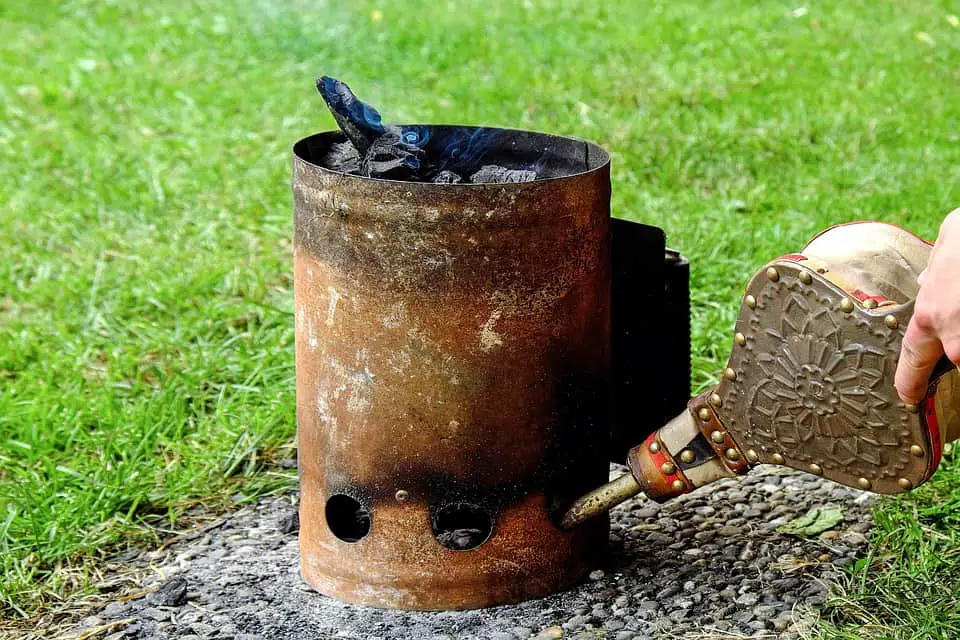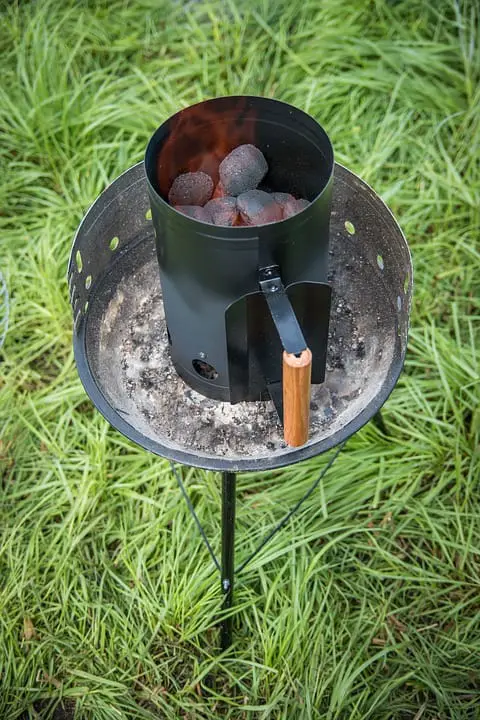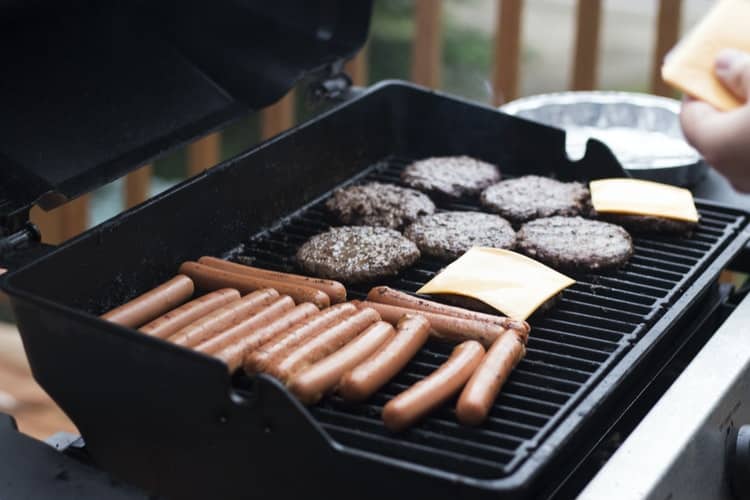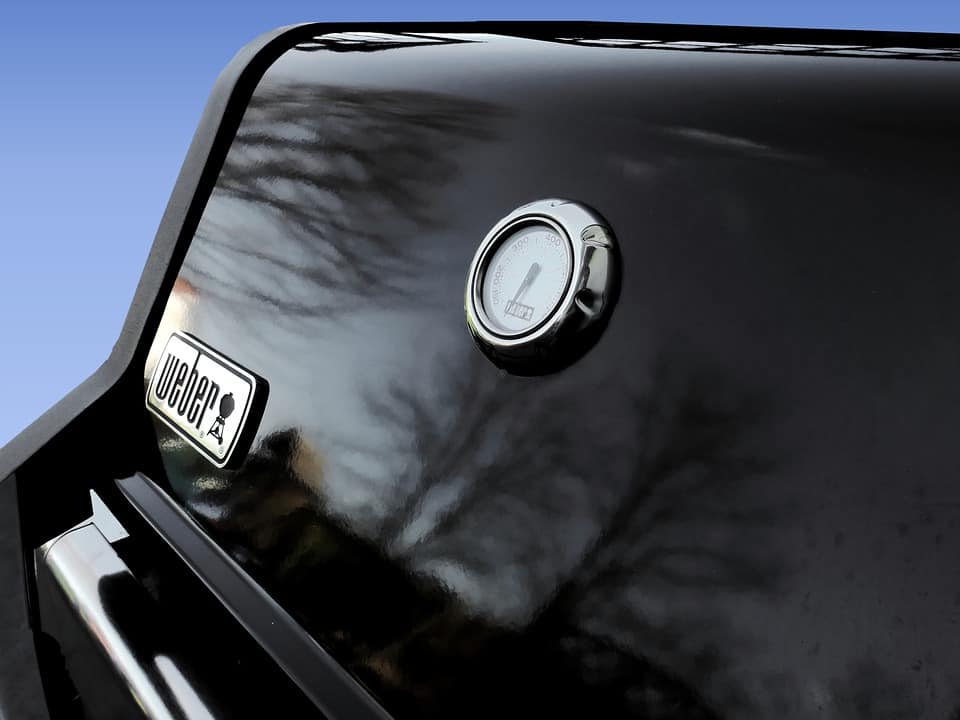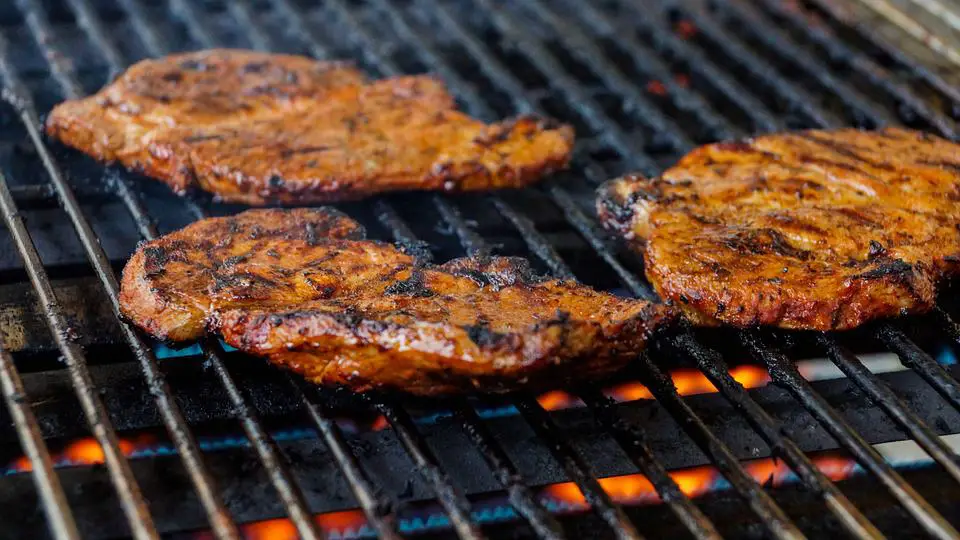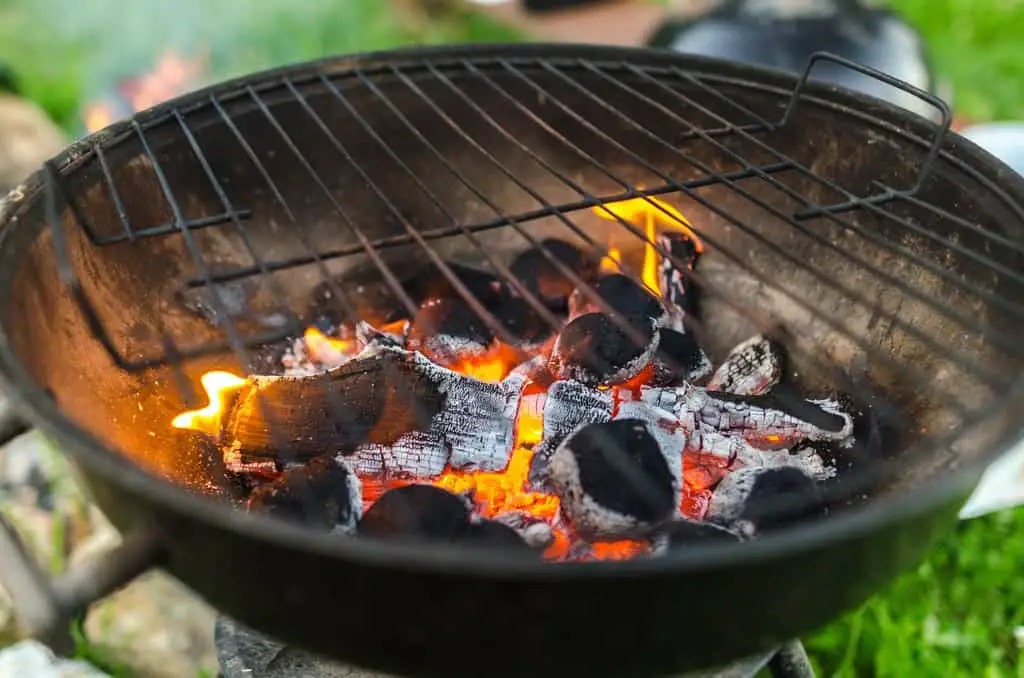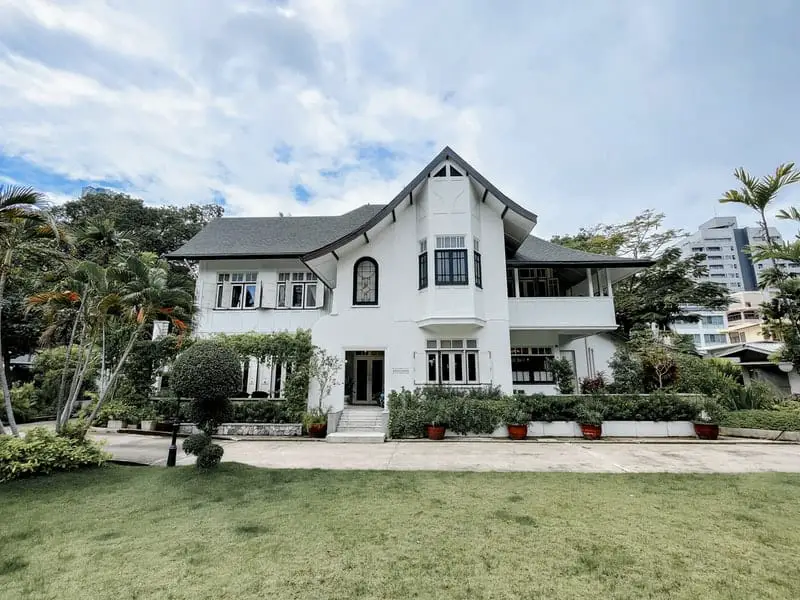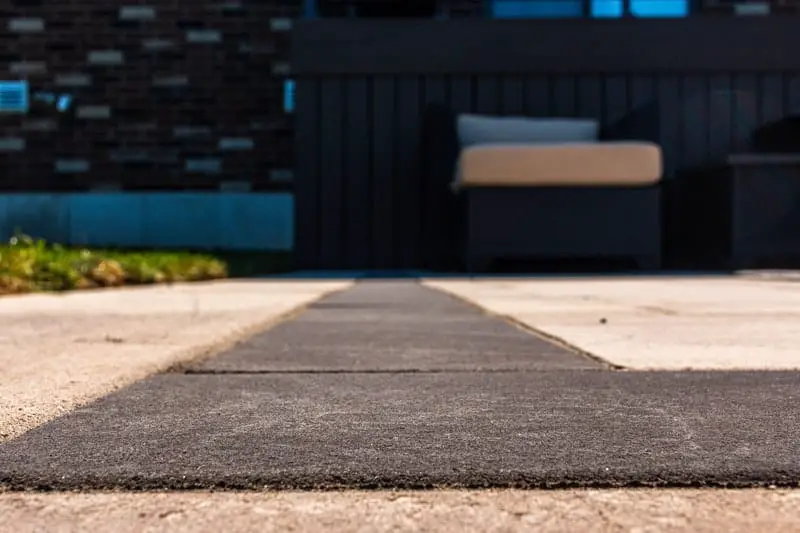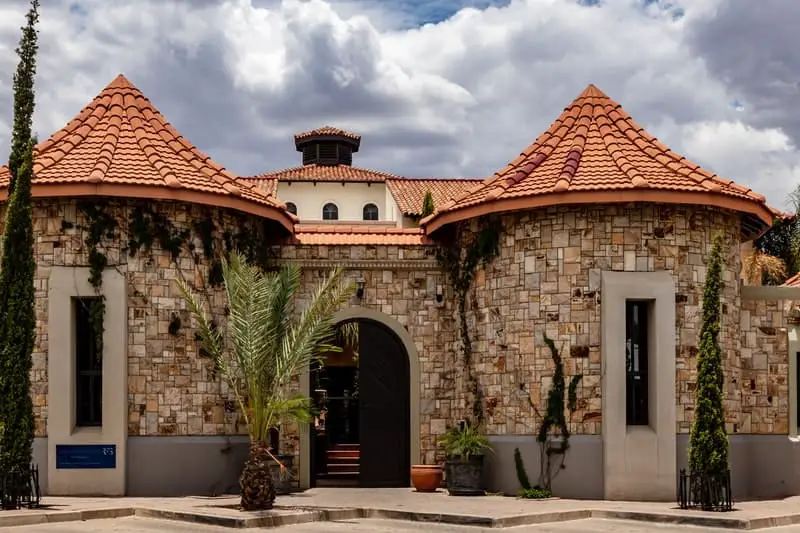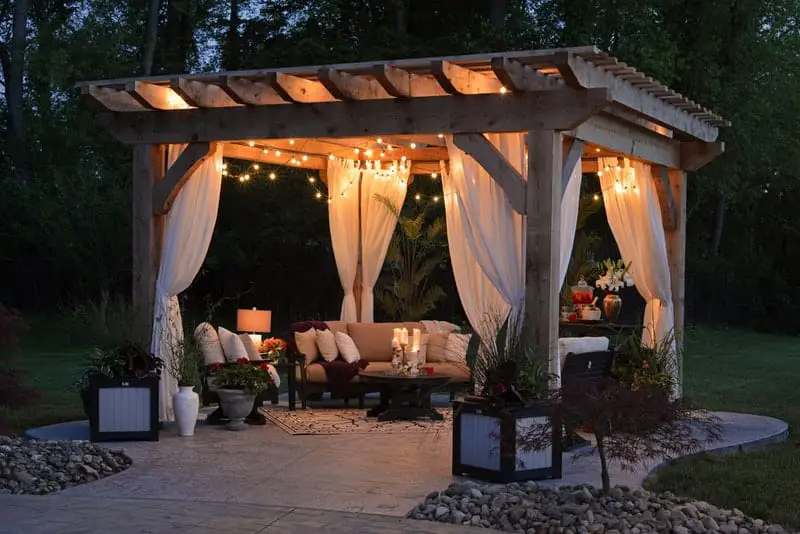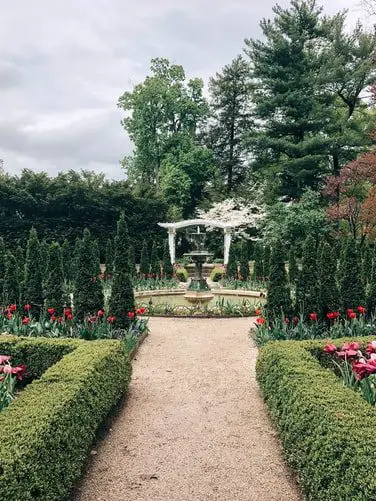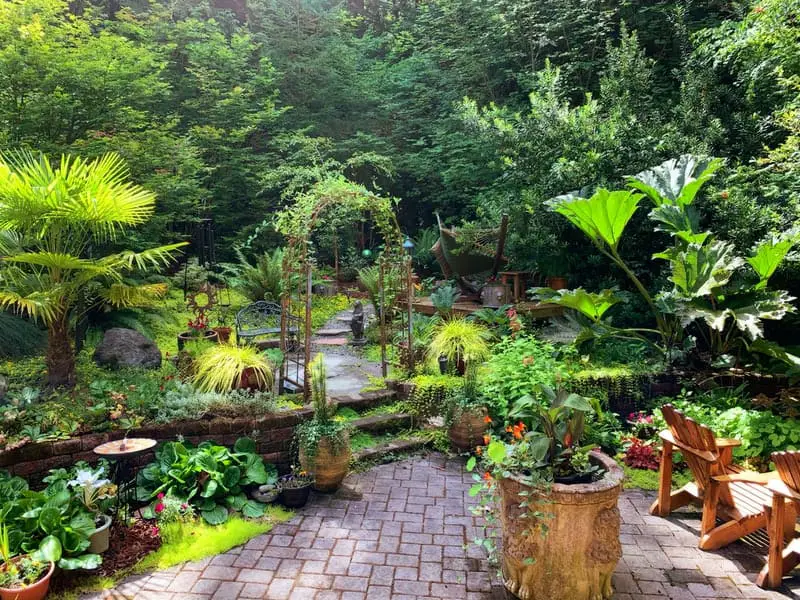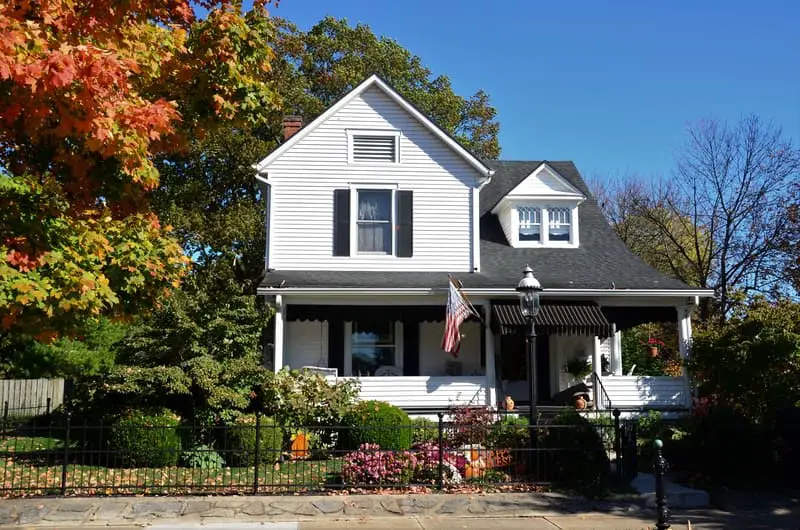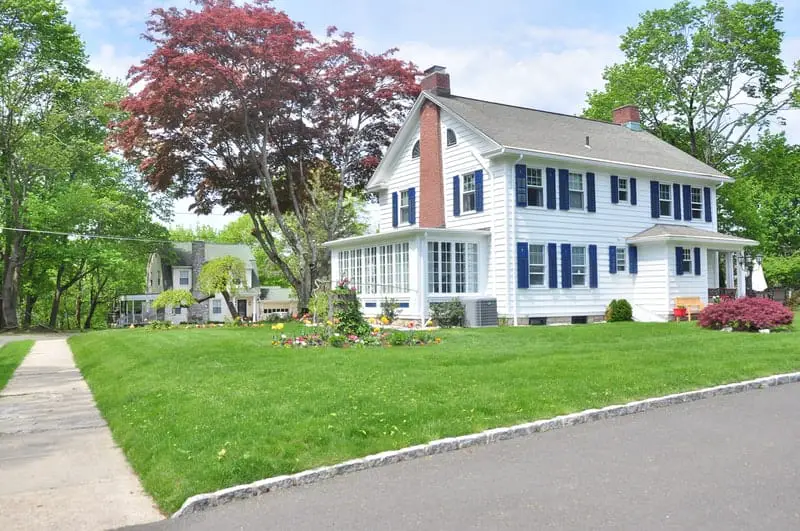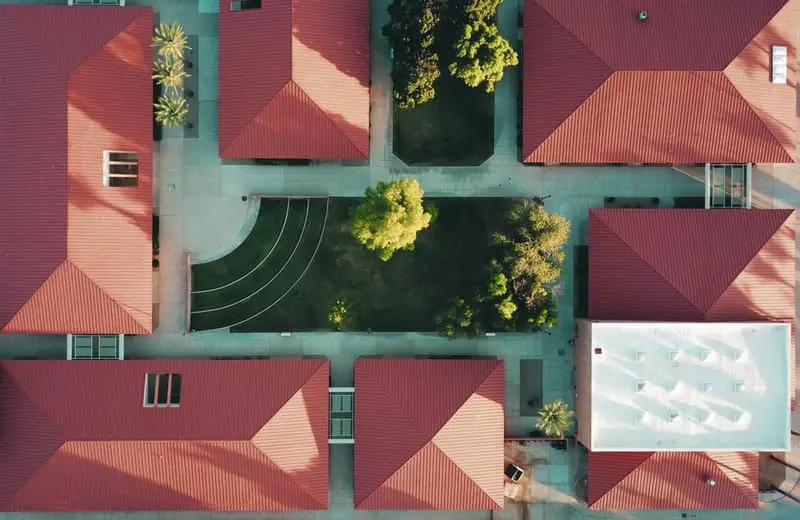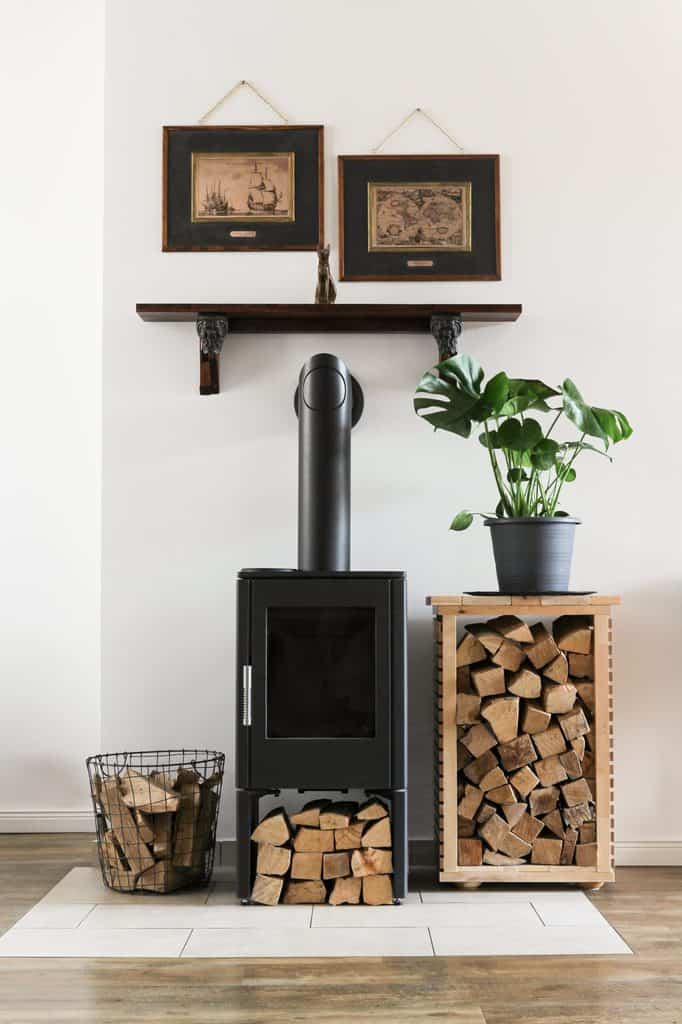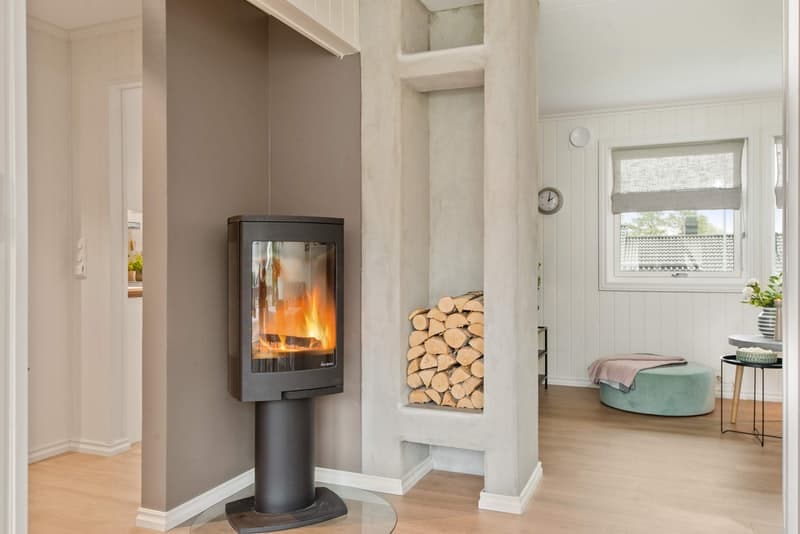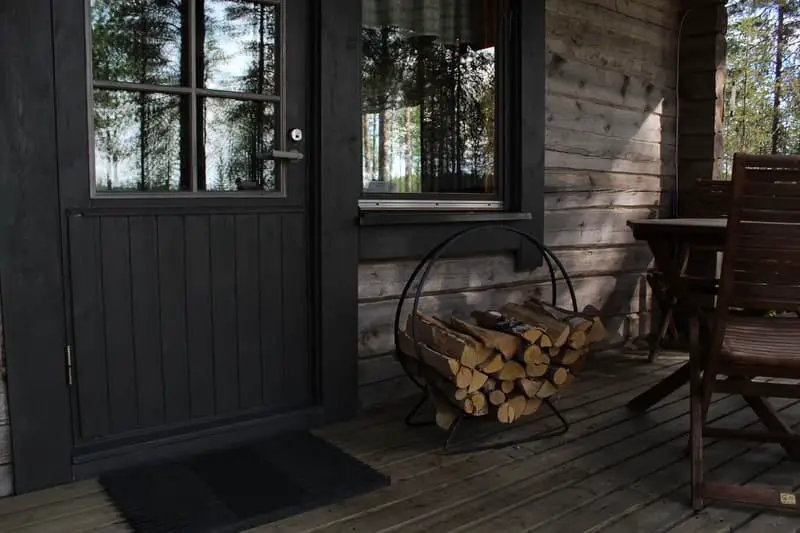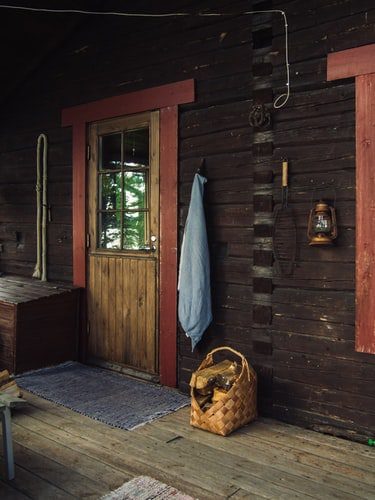If there is one landscape feature that many are raving and dreaming about, it is the outdoor fireplace. Who wouldn’t want to sit by the fire and get cozy with the people close to you, right? This landscape element has been a cornerstone of the outdoor living space movement for quite some time. Sure, fire pits and chimeneas are nice, but if your yard has the space and you have the money, a masonry fireplace at the edge of your patio living space simply can’t be beat.
Not only will it raise the value of your real estate and add some structure and beauty to your yard, but it will also allow you to extend your patio season considerably. If you plan to add a fire feature to your property, congratulations on finding this article about outdoor fireplaces! This is a crash course on everything fireplace-related.
What is an Outdoor Fireplace?
As its name suggests, an outdoor fireplace is quite simply a fireplace that is outside, typically along the edge of your patio living area. It is very similar to an indoor fireplace in terms of materials used, but its construction is more straightforward since the chimney can be much shorter and isn’t connected to the house.
Outdoor fireplaces are commonly composed of a firebox and a short chimney. While they are primarily designed for heating, some are also designed to become wood-fired ovens where homeowners and guests can make pizzas or even casseroles.
Are Outdoor Fireplaces Different from Fire Pits?
Although both fireplaces and fire pits burn wood and add some warmth and character to your landscape, they aren’t the same. Here are their key differences:
Outdoor Fireplace
- An outdoor fireplace is composed of a firebox and a chimney for proper smoke ventilation.
- Firebox openings are usually arched, rectangular, or square.
- Fire Brick should always be used to line the firebox.
- Chimneys may either be tapered at the top or rectangular.
- They may be attached to the house or situated at an adjoining patio, deck, or terrace.
- They can be almost any size and as complex or simple as you would like.
- People sit in front to enjoy the fire and feel the heat radiated out of the front when in use.
- They may or may not have a fire screen to catch hot ashes.
- They are traditionally constructed using all masonry materials.
- They traditionally burn wood, but there are certainly gas and electric varieties.
- They can add privacy and block wind due to their size and structure.
- Construction will likely require a building permit.
Outdoor Fire Pit
- Fire pits can either be in the ground or freestanding
- Most fire pits are round in shape, but there are also oval, square, and rectangular ones.
- They allow for seating all around the fire.
- They may or may not have a fire screen to catch hot ashes.
- They can be built anywhere since they don’t have a chimney.
- It’s basically just a campfire, other than it may be sunk into the ground with some sort of masonry structure. Or it is a metal structure that can be moved around.
- Much less expensive to build and maintain.
- Usually, burn wood, but there are gas or electric varieties.
- Wide-open to the wind, nothing to stop the fire and ashes from blowing around.
- Typically no building permit will be required.
- So the only thing these two have in common is that they burn wood? Pretty much, the fire pit is nice, but it is very different from an outdoor fireplace.
- Both will keep you warm on a chilly night, and both will give you a spot to burn some marshmallows.
9 Reasons to Add an Outdoor Fireplace to Your Property
Outdoor fireplaces are pretty romantic, and they allow you to spend late nights outside while you’re snuggling with your partner or sharing some fun times with the kids while making s’mores. If you’re still trying to convince yourself or your housemates to add a fireplace just outside your house, here are some reasons that would have you looking for a professional builder:
- Outdoor fireplaces provide warmth – The primary function of an outdoor fireplace is to provide warmth during those cold nights. Instead of being cooped up inside, you’ll be able to enjoy your outdoor space without worrying that you’re going to freeze.
- It extends your time spent outside – Since outdoor fireplaces provide heat, staying outside for more extended periods won’t be a problem. You can throw an intimate celebration until morning or sit and talk with your loved ones all night while warming up in front of your fireplace.
- It extends your living space – coupled with a few nice comfy lounge chairs or maybe a couch; it can give you that cozy living room feel outside on your patio. Who couldn’t use an extra living room,
- It is easy to maintain – just a bit of ash cleanout, nothing too complicated here.
- It can improve the overall look of your property – By adding this fire feature, your backyard will have an accent piece that will pull people’s attention, even when it is not lit.
- It changes the ambiance of your home – Not all of us are lucky enough to have a fireplace in the house, so this is a much more affordable way to bring the sights, sounds, and smells of a real wood fire into your life.
- You have extra space for entertainment – adding the outdoor fireplace might just give you an additional seating area attraction for your guests.
- It is an excellent investment – In the future, when you decide to move and sell your property, you’ll realize that you made a great choice by adding an outdoor fireplace to your yard. The aesthetic appeal it brings increases your home value. You’ll also find it easy to find potential buyers since outdoor fireplaces are currently a popular trend.
- It can keep bugs away – the smoke from the fire will help discourage them.
Things to Consider Before Installing an Outdoor Fireplace
Don’t let your excitement jeopardize your plans to build an outdoor fireplace. Make sure that you have researched and prepared well so you won’t encounter problems in the long run.
Here are a few things that you should consider before building:
Identify your outdoor fireplace’s purpose –
Your purpose for adding an outdoor fireplace to your backyard is an important planning consideration since it will help you decide on the size. If you have identified that you just want a place where you and your family can hang out and share some stories, a small fireplace is suggested. However, if you would like to cater to more people— your friends, colleagues, or distant relatives perhaps, then you should opt for a two-sided outdoor fireplace.
Review local ordinances
This is crucial since some areas may not allow fireplaces. Always check local ordinances and talk to homeowners’ associations prior to beginning any construction. You don’t want to get part way into your construction project just to be shut down and fined by the local authorities.
Consider safety when choosing the location.
Choosing the location of your fireplace is also something you should carefully plan. We are dealing with fire here, so we need to make sure that prevailing winds aren’t going to be blowing hot ashes into our trees or house.
Prioritize proper ventilation
Due to the short chimney, it would be easy for the smoke from your outdoor fireplace to settle down into the seating area, especially if you have an enclosed or partially walled-in areas. You want this pretty much out in the open so that you are not trapping the smoke.
Familiarize yourself with the types of fireplaces
Part of building an outdoor fireplace is choosing between wood and gas. Be honest with yourself here. Are you the type that doesn’t mind the extra work of chopping or buying wood and cleaning ashes? If you are not the type to enjoy the processes involved with building a wood fire, you may want to consider installing a gas fireplace.
Make sure the fireplace complements your home.
With so many styles, colors, and patterns of block available, you can create any sort of fireplace that you can dream of, but let’s make sure that it fits well with your home as well as the surrounding landscape and hardscapes. You want things to look like they were planned out, and you don’t want too many different materials. Having the masonry of the fireplace match or compliment any seat walls and patio stone that you might already have is a good start.
Pay attention to scale
You also want the scale of the new fireplace to complement and reflect the scale of the house. Neither a large fireplace next to a tiny house nor a tiny fireplace next to a big house will look right.
Learn about fire safety
No matter how much warmth and coziness the fire brings, it is still hazardous. If you haven’t had a fireplace before, you need to do a bit of fire safety research to make sure that you can keep yourself and your family safe. You must learn how to use a fire extinguisher and make sure that one is readily available near the fireplace.
Consider the Placement
I mentioned a while ago that your outdoor fireplace must compliment your home, but another concern is how it will fit into your existing patio. Do you have a good spot for it, or will you need to expand the patio to make this work? Will it be too close to the outdoor kitchen or that big tree in the yard? Will you have room to create a seating area in front of it, or is the entire patio already full of furniture? Most patios simply don’t have enough room for a completely new seating area. This is an important consideration. If your entire patio needs to be re-done to accommodate this new outdoor fireplace, the project’s scope and cost just increased significantly.
Consider Features
Should this fireplace be small and simple, or might you want it built big enough to incorporate a mantle and hearth? Will you want a built-in wood storage area or a built-in area for tools?
Consider Accessories
Will you need to purchase fire tools like pokers and tongs? Will you need a fire screen or wood hauler? Don’t forget about furniture; you will surely want some comfortable lounging furniture near your fireplace.
Pros and Cons – Wood vs. Gas
Wood-burning Pros
- More rustic and authentic.
- The fire is different every time and changes through the hours you spend around it.
- The fire provides you with something to do while it is burning; many people enjoy poking in the fire, arranging the logs, adding logs, etc.
- It will actually smell like the campfire. Nothing beats that smell of burning wood (for some people)
- Cheaper to install, no need for gas lines and burners.
- Chopping and splitting firewood is good exercise.
- The smoke can keep the bugs away.
- It might be an excellent way to get rid of those sticks that always seem to land in your yard.
- No chance of a gas leak.
- Neighbors might like the smoke?
Wood-burning Cons
- The fire needs to be built; it doesn’t just happen at the flick of a switch.
- It’s an actual wood fire, so that means popping and hot embers jumping out or blowing out of the firebox.
- It will actually smell (a con for some people)
- You will need to chop or buy firewood
- The fire will need some attention as it burns.
- The fire will be harder to extinguish than gas.
- Neighbors might not like the smoke?
- You might end up with ashes on cars, tables, chairs, etc., after a night of burning.
Gas Pros
- Sarts at the flick of a switch
- It doesn’t really smell.
- Easy to extinguish.
- No ashes or debris to clean up.
- No sparks and embers flying out of the firebox.
- Not smoky
- Can choose a gas burner with ceramic logs.
Gas Cons
- No wood-burning smell.
- Nothing to do while it burns.
- It doesn’t give you that same cozy feeling like an actual wood fire does.
- More expensive to install.
- Potential for the gas burner to corrode over time and need replacing.
- The chance of a dangerous gas leak.
- The fire looks the same every time.
Outdoor Fireplace Styles
Outdoor fireplaces are constructed for both functionality and aesthetics. As mentioned earlier, you will want to match the style of your fireplace to the style of your home and patio.
Traditional Outdoor Fireplace Style
This style would remind you of fireplaces found in log cabins which give off some rustic vibes. They are usually made out of stones and bricks for a cozier home atmosphere. To achieve a complete traditional look, the fuel recommended for this fireplace is wood. However, they can also be outfitted with a gas or electric insert if you desire.
Contemporary Outdoor Fireplace Style
If your home has contemporary decors, I would recommend a contemporary fireplace designed to have sharp lines. Like the traditional fireplace, the materials used are stones, bricks, and concrete, but a more contemporary feel.
Modern Outdoor Fireplace Style
Some outdoor fireplaces double as a piece of art. If you have a modern styled home, instead of using the usual brick and stone, you can use materials such as glass and marble for a more futuristic and clean look. These might be looked at as more of an artistic focal point than a source of heat.
Outdoor Fireplace Materials
The outside covering of your fireplace is the first thing your guests will notice, and it is a distinctive design element that you should plan and style well if you want to add value to your property. Consider how your fireplace will blend in with your whole landscape. You should choose materials that will bring cohesiveness to the overall look of your property. If you can find the right material for your fireplace, it is possible for it to look as if it has been there from the begining.
Listed below are the common materials you can use for your outdoor fireplace project:
Brick
Bricks are made out of clay which naturally occurs in many states. These clays are shaped and heated in an oven to become durable. Where the clay originated will determine its color, ranging from cream to dark brown. If your home is built with brick, then it makes sense that you would want to extend the same aesthetic in your outdoor fireplace. Be sure to take the time to find a brick that compliments the color of the house.
Stone
Using stone to build your outdoor fireplace can give it a more natural look. You can use genuine stones or manufactured ones, depending on your budget. The pros of choosing this material are that it is long-lasting and extremely durable, you can choose from various earth stones, and has an upscale style. On the other hand, it also has its disadvantages. It is more expensive than other materials, and the installation is more complex.
Stucco
Stucco is made of Portland cement plaster which is factory-prepared, and this is a low-cost material typically applied to a concrete block understructure. Stucco can be reasonably reliable and durable but will tend to get dirty more quickly, and in places that freeze, a small crack in the stucco can let in water which can cause the stucco to fail in freezing temperatures. Homeowners who want to achieve a Spanish or Mediterranean look are better off choosing this material. It is readily available in multiple colors and it is not too heavy to ship, unlike stones and bricks.
Concrete
Concrete is very durable and is used in all types of construction. Many fireplaces are constructed of concrete, and it is a versatile product that can be formed into whatever shape you want. The downside of concrete, in my eyes, is the aesthetic appeal, and it is not the most attractive option to choose.
Outdoor Fireplace Safety Tips
When you add a heating feature to your outdoor living area, you also increase the risk of injuries and unexpected fire.
- Clear your yard waste. Any debris and yard waste can become a hazard if they contact hot embers or fire.
- Only use the intended fuel. Don’t burn any material in your outdoor fireplace other than what is meant to be burnt in it.
- Prune trees and shrubs that are near your outdoor fireplace. Low-hanging branches, bushes, and shrubs that grow near your outdoor fireplace need to be regularly pruned so they won’t catch fire.
- Use safety screens. Add a safety screen on your outdoor fireplace to serve as a barrier between the fire and your guests. This will prevent embers from blowing or popping out of the firebox.
- Store firewood far from your fireplace. Even though it is convenient to store wood near your fireplace, the Federal Emergency Management Agency (FEMA) does not recommend this since it can increase fire risk. It would be better to store your firewood 30 feet away from any structure.
- Don’t let kids play with the fire. This one is pretty obvious. Kids are naturally curious and playful. If you put something as exciting as a fireplace in your yard, they are bound to play with it. The last thing you need is a kid running through the yard swinging a flaming stick. Teach them how to deal with fire and how to stay safe.
- Don’t light your fireplace and leave. Leaving any fire unattended is a terrible idea. Many forest fires are started by embers left glowing in a fire.
- Stock up on emergency supplies. It is required that you keep emergency supplies on hand just in case an unexpected fire occurs. Some of the essential items you should have are buckets of sand, a water hose, and a fire extinguisher.
- Use the correct log size for wood fireplaces. Wood-burning outdoor fireplaces can be dangerous if you use wood that is too big for your setup. All your logs must fit on the firebox to ensure that it is safe for you and your guests. Over-stuffing a firebox will only result in a dangerous fire that blackens the front of your fireplace with soot.
- Maintain a distance between your furniture and the fireplace. Most patio furniture is flammable, so keep it far enough away so that it won’t catch fire.
- Completely extinguish the fire when you are done. Many people leave a fire and go into the house for the night when it is still lit or glowing, and this is always dangerous. Fully extinguish your fire when you are done.
Frequently Asked Questions
How Much Does it Cost to Build an Outdoor Fireplace?
According to Home Advisor, the cost of building an outdoor fireplace is between $1,500 to $20,000. Meanwhile, if you opt for pre-made kits, expect to pay $1,500 to $9,000. On the other hand, custom projects will run you from $8,000 to $50,000, depending on your fireplace design and your budget.
Do Outdoor Fireplaces Need a Chimney?
The need for a chimney depends on the type of fireplace. Gas fireplaces are designed to operate without needing a vent. On the other hand, wood-burning fireplaces always have a chimney to direct smoke upwards.
What Direction Should an Outdoor Fireplace Face?
Many experts suggest that outdoor fireplaces should be built so that the back wall faces the wind. This is primarily to control the fire and reduce the smoke produced by burning wood, and this also works to protect you and your guests from sudden gusts of the wind.
How Far Does an Outdoor Fireplace Need to be From the House?
In general, your outdoor fireplace should be set up about 10 to 20 feet away from your house or any structure that might be flammable. Note that this is only the minimum distance. The farther it is from your indoor living space, the better.
Final Thoughts: Is Building an Outdoor Fireplace a Good Choice?
There is no definite answer as to whether building an outdoor fireplace is a good choice for you. It will all depend on your location and how often you will use it. If your area allows building one without any restrictions, then you are quite lucky! All you have to consider is whether you will utilize it.
I hope this guide taught you all you need to know about outdoor fireplaces and why they are popular right now. Make sure that you bookmark this page so you can review this once you are already in the process of building your fireplace.

